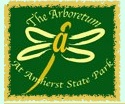Please use the navigation menu at bottom the Page
favicongohere
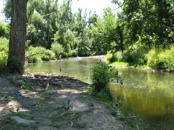
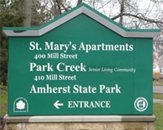
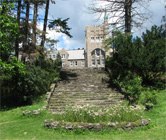
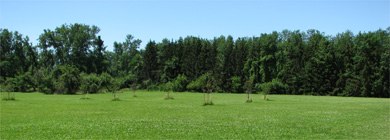
AMHERST STATE PARK


MenuGoHere

History of Amherst State Park News Archives
AMHERST TOWN OFFICIALS SHOULD PRESERVE
THE BEAUTY OF ST. FRANCIS MOTHERHOUSE
Buffalo News, June 19, 1998 by Larry Beahan
Amherst is about to purchase a tiny kingdom, the Sisters of St. Francis Motherhouse and its hundred or more pastoral Williamsville acres. This convent and its grounds lie at the very center of Amherst's rapidly developing urban core and will provide it with a much-needed park and a very substantial building that is also a fascinating piece of architecture.
St. Mary of the Angels Motherhouse will become a municipal building of some sort once the town completes its purchase from the Sisters of St. Francis. The town should do all it can to preserve the magnificent chapel inside the Motherhouse.
Some people feel it would be inappropriate -- if not illegal -- to keep the stained-glass windows, organ, statues and altar of the magnificent chapel in a municipal building. They have an exaggerated sense about the division of church and state.
The first glimpse of the Motherhouse is nothing less than inspirational. "I thought I was in Shangri-La," a friend of mine gasped, describing his boyhood first visit to the Sisters of St. Francis Motherhouse and farm along Ellicott Creek. He had it just right.
The first time I entered those grounds was on a clandestine early morning jog. I had heard of migratory birds and the orchards and the old castle-like building, but until then had respected the private property signs on that inviting mass of green meadow and pine off Riest Street.
That first dewy morning the place took my breath away. I felt as if I had entered some mystic oriental kingdom or the grounds of some Swiss monastery with Alps just out of view. I ran past the red gristmill barn, the tiny medieval stone chapel and the nuns' graveyard. I crossed the flat, rich Ellicott Creek bottomland and then went onto the little wooden bridge over the dark creek. Up the hill, I burst through a line of shrubs and there, in the mist, was the Knight Templar Abbey of my fantasy,the Motherhouse itself with its angel gargoyle, asymmetric spire and ornate stone entrance way.
Some years later I toured the immaculate interior of that intriguing building. Built in 1928 with marble-chip floors and solid-oak woodwork, it has been faultlessly maintained. You enter a double-storied antechamber with a formal staircase, a balcony and a ceiling of carefully finished wooden beams formed into squares. A half-again life-size statue of St. Francis greets you. The four-story building contains seemingly hundreds of small, private rooms surrounding two large, gardened interior cloisters.
The building's magic surprise, though, is the three-story, cathedral-ceilinged, 500-seat chapel concealed on the second floor at the heart of the building. It is lined with white marble. Its organ sits in a sweeping choir loft surrounding half the magnificent chamber. Rich, stained-glass windows, pews of blond maple, the stations of the cross, a marble throne, an altar and a crucifix complete this beautiful church-within-a-convent.
Last fall my wife and I visited the frescoes, statues, palaces and churches of Venice and Florence. When I was in the Air Force, we had four years to explore the well-preserved art and architecture of Buddhist Temples and Shinto Shrines of Japan. In Russia, we heard the stories of secularized churches under Communism and saw them restored for their historic and cultural value.
St. Mary of the Angels Motherhouse is no less deserving of preservation. It will always be remembered as a convent. Let's make the most of that. Whatever purpose the town decides for it, let it retain its medieval religious mystique, which is part of our history. Keep those stained-glass windows and statues and pews and that big crucifix.
Removing them would be like putting pants on Michelangelo's Statue of David in Florence or melting down the giant iron Buddha in Kamakura Park.
When the town owns the building, the chapel can be deconsecrated as a church and become a non-denominational place of worship or concert hall or museum, but let's not tear it apart. If the Moonies or the Communist Party had a historic spot in our community it would be worthwhile to retain their flags, banners and symbols as part of the history of this town. We have in fact preserved the characteristic simplicity of the little stone Mennonite Church on Main Street. Why not retain the pomp and
Keep the chapel intact and give the Town of Amherst the most splendid municipal building in the lushest setting in the entire nation.
Keep the historic St. Francis Chapel the way it is, and use the Motherhouse as a new Amherst Town Hall.
LAURENCE T. BEAHAN, M.D., is a retired Amherst psychiatrist.






